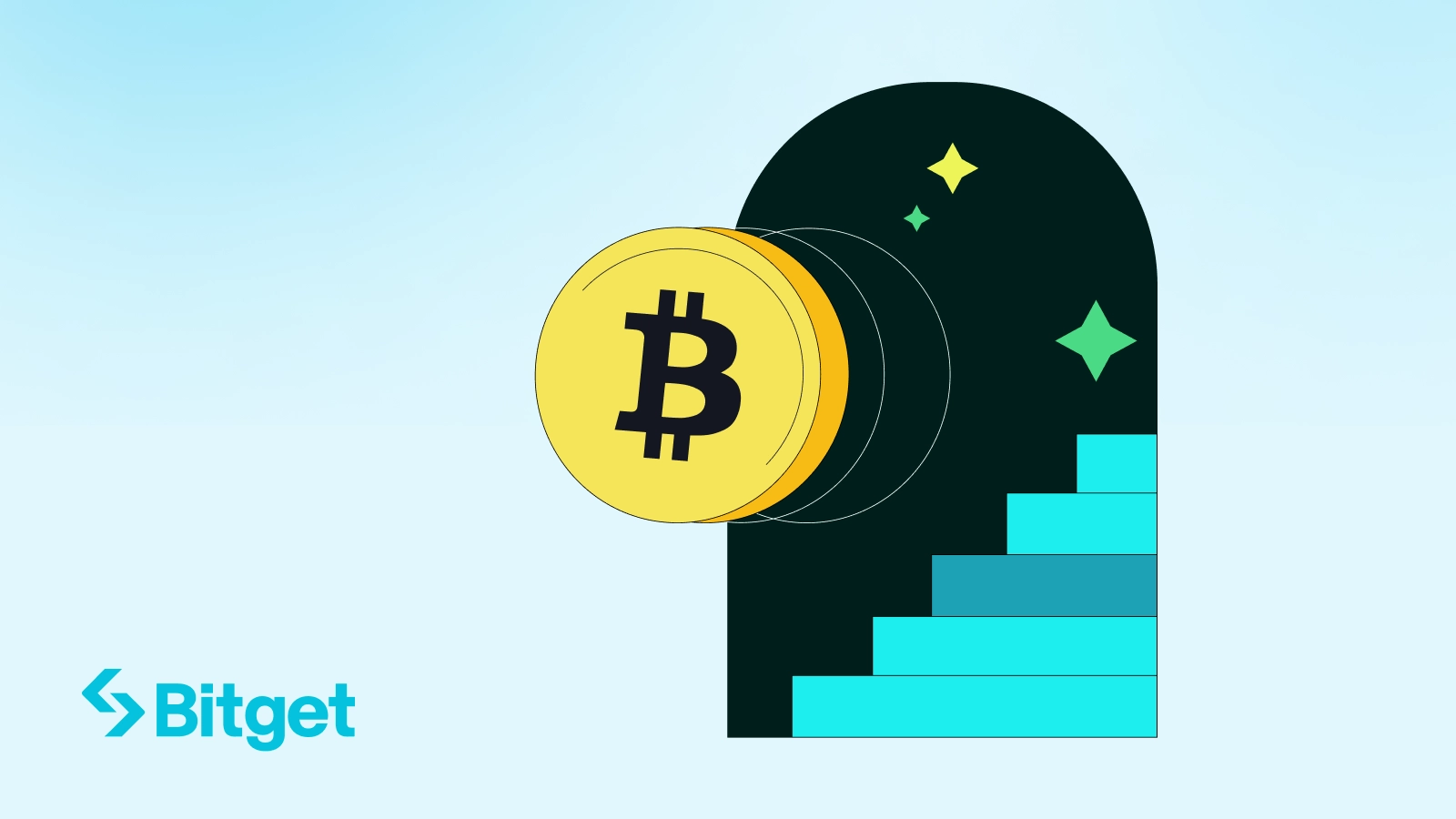
The Role of Altcoins in a Diversified Crypto Portfolio
In recent years, the cryptocurrency market has witnessed the emergence and rapid growth of alternative cryptocurrencies, altcoins, which have gained significant popularity and market share in the crypto world. While Bitcoin remains the dominant player in the crypto market, with a market cap surpassing all other cryptocurrencies combined, altcoins have also gained traction due to their unique features and applications.
In this article, we will look at some categorizations of altcoins and why you need some exposure to altcoins in your portfolio.
Importance of Including Altcoins in a Diversified Crypto Portfolio
Owning Bitcoin only is one of the four crypto portfolio options suggested by Ric Edelman, founder of the Digital Assets Council of Financial Professionals and author of “The Truth About Crypto.” However, most crypto experts suggest keeping smaller proportions of altcoins with a large share of ETH and BTC to create a diversified and balanced portfolio.
Let’s explore why owning altcoins is essential for a diversified crypto portfolio.
Enhanced Diversification and Risk Management
Diversification is essential in investment management, as it helps investors mitigate the volatility associated with digital assets. It involves spreading your investment across different assets to minimize risk and maximize returns.
Including altcoins in a diversified crypto portfolio can provide the benefits of reduced correlation and exposure to different markets.
Exposure to Innovative Projects and New Technologies
Altcoins can provide exposure to innovative projects and technologies, which is critical for any crypto investor looking to stay ahead of the curve in the fast-evolving crypto market. So, by investing in these altcoins, investors can potentially reap substantial returns if these projects succeed.
Access to Niche Markets and Industries
One of the main advantages of including altcoins in a diversified crypto portfolio is accessing niche markets, and industries focused on specific use cases, such as privacy, scalability, interoperability, or governance, not adequately addressed by Bitcoin and Ethereum. Investing in altcoins can enable crypto investors to capitalize on emerging trends and opportunities.
For example, privacy-focused altcoins such as Monero and Zcash have gained popularity among users prioritizing anonymity and security. On the other hand, investors might choose to invest in Polkadot and Cardano, known for improving scalability and interoperability, enabling different blockchain networks to communicate seamlessly.
Potential for High Returns
Allocating some shares to altcoins is a key investment strategy for successful portfolio management. Altcoins have the potential for high returns due to their lower market capitalization and volatility. They can experience rapid price swings, which can be beneficial for crypto investors looking for substantial gains.
Categories of Altcoins
Altcoins can fall into various categories, such as utility tokens, security tokens, governance tokens, platform coins, payment coins, privacy coins, stablecoins, etc. Notably, some altcoins may fit into multiple categories, and new types may emerge as the cryptocurrency market continues to evolve. Altcoins are also differentiated into Layer 1 and Layer 2 coins based on the blockchain solutions they offer.
Layer 1 refers to the base layer of a blockchain network, including the underlying protocol and consensus mechanism. Layer 1 coins are the backbone of their respective blockchain networks and are used to power transactions and execute smart contracts. Examples of Layer 1 coins include Bitcoin, Ethereum, Litecoin, and Bitcoin Cash.
Layer 2 refers to the second layer of a blockchain network, built on top of the base layer to improve the functionality and scalability of the underlying blockchain. Layer 2 coins offer additional features such as faster transaction speeds, lower fees, and increased security. Examples of Layer 2 coins include Lightning Network (built on top of Bitcoin’s blockchain), Plasma (built on top of Ethereum’s blockchain), and Raiden Network (built on top of the Ethereum blockchain).
Both Layer 1 and Layer 2 coins are important components of the cryptocurrency ecosystem, and each serves a unique purpose in supporting the development of the industry.
Let’s take a closer look at some of the altcoin categories below.
Utility Tokens
Utility tokens are altcoins designed to provide a specific utility within a blockchain ecosystem or platform. These altcoins facilitate transactions or access and pay for services within the ecosystem.
Utility tokens differ from other types of altcoins, such as payment coins and security tokens, in that these don’t represent a stake in a company or asset, nor do they have any inherent value outside of their use within a specific ecosystem.
Security Tokens
Security tokens are digital assets representing real-world asset ownership, such as property or equity. Unlike utility tokens, security tokens give investors ownership of the underlying asset.
Security tokens are programmable, allowing for greater transparency and automation in the issuance and management of the tokens.
These tokens are regulated by securities laws and are subject to the same rules and regulations as traditional securities.
Stablecoins
Stablecoins are pegged to the value of a particular asset, such as the US dollar or gold, to reduce volatility. We distinguish between:
- Fiat-backed stablecoins
- Crypto-backed stablecoins
- Algorithmic stablecoins
Examples of popular stablecoins include Tether (USDT), USD Coin (USDC), Dai (DAI), TrueUSD (TUSD), and Binance USD (BUSD).
Governance Tokens
Governance tokens allow token holders to participate in a particular blockchain platform’s governance and decision-making process by making proposals and voting on changes to the network, such as protocol upgrades, changes to fees, adding new features, etc.
Key Factors to Consider When Selecting Altcoins for Your Portfolio
With thousands of altcoins available, it can be challenging to determine which ones are worth investing in.
Here are some of the critical factors to consider when selecting altcoins that align with your investment goals and risk tolerance:
Market Capitalization
Market capitalization is one of the key factors to consider when selecting altcoins for your investment portfolio. It refers to the total value of a cryptocurrency currently in circulation and is calculated by multiplying the current price of the cryptocurrency by the total number of coins in circulation.
Use Case
Another factor to consider is the altcoin’s use case or utility, i.e., its practical application. Altcoins with a clear use case that can solve real-world problems like improving scalability or privacy are more likely to succeed than those without a clear purpose.
Development Team and Community Support
When evaluating the development team behind an altcoin, it’s important to consider the memebers’ experience, qualifications, and track record. Look for teams with a history of successfully launching and maintaining altcoins.
Similarly, when evaluating community support for an altcoin, consider the community’s size and engagement, the quality of discussion and feedback, and whether there are active social media channels and forums dedicated to the altcoin.
Liquidity and Availability
Liquidity refers to the ease with which an altcoin can be bought or sold on the market. High liquidity means many buyers and sellers are willing to trade the altcoin, making buying or selling it at the desired price easier.
Availability refers to the number and quality of exchanges where the altcoin is listed. More exchanges supporting the altcoin means more trading opportunities for investors.
Risk and Volatility
Risk is the potential for an investment to lose value, and volatility is the degree of variation in the investment’s price over time. These two factors are closely related and can significantly impact your investment returns.
When selecting altcoins for your portfolio, it’s crucial to consider the level of risk you’re willing to take. Volatility can affect your portfolio’s overall performance. Highly volatile assets in your portfolio make it challenging to predict your investment’s future performance.
To mitigate these risks, it’s crucial to diversify your portfolio by investing in a wide range of altcoins.
Managing Risks Associated With Altcoins
While altcoins can offer unique investment opportunities, they also come with a higher risk than more established cryptocurrencies like Bitcoin. As a result, it’s crucial for investors to manage their risk exposure when investing in altcoins.
Here are some tips for managing risks associated with altcoins to maximize your potential returns:
Diversification Within the Altcoin Sector
One way to diversify within the altcoin sector is to invest in altcoins with different use cases or blockchain networks. For example, you could invest in altcoins focused on payment processing, privacy, or smart contract technology. This way, you can spread your investment across different sectors, reducing the risk of exposure to any particular one.
Balancing High-risk and Low-risk Altcoins
Investing solely in high-risk altcoins can be incredibly risky as you put all your eggs in one basket. If these investments fail, you could lose a significant portion of your investment.
On the other hand, investing only in low-risk altcoins may not provide the level of returns you’re looking for. While these investments are less risky, they may not have the same growth potential as high-risk altcoins.
To balance your altcoin portfolio, consider investing a portion of your funds in high-risk and the remaining portion in low-risk altcoins. The exact percentage you allocate to each category will depend on your risk tolerance and investment goals.
Using Stop-Loss Orders and Position Sizing
Stop-loss orders are automatic sell orders that trigger when the price of an asset drops to a predetermined level. By setting a stop-loss order, investors can limit their potential losses if the altcoin price drops significantly.
Position sizing refers to the amount of capital an investor allocates to a particular investment. Position sizing involves determining the percentage of your portfolio you’re willing to allocate to the altcoin based on your risk appetite and investment objectives.
Combining stop-loss orders and position sizing can help investors effectively manage the risks associated with altcoins.
Dollar-Cost Averaging
Dollar-cost averaging, DCA, investment strategy is an automatic system of making fixed dollar amount investments, regardless of a token’s price. You can divide your investment capital into periodic investments, such as first investing a percentage, i.e., 25%, and spreading the investment over time.
DCA is a long-term investment strategy that helps you grow a profitable crypto portfolio by easily buying/selling assets without suffering much loss.
Developing an Exit Strategy
Consider thinking about your exit plan before entering a trade. Stick to your plan at what price to close out the trade for a profit and at what price to close out for a loss.
Monitoring Market Developments and Adjusting Your Portfolio Accordingly
Monitoring market developments involves keeping track of news, events, and trends that can impact the value of altcoins. This can include government regulations, new partnerships, technological advancements, and market sentiment.
By staying updated with these developments, you can make informed decisions about your portfolio and adjust it accordingly.
Additionally, you can use a crypto portfolio tracker to keep track of your investment portfolio from one place, as tracking the performance of your crypto assets from multiple blockchain networks stored in different wallets and across several crypto exchanges is challenging and time-consuming. The best crypto portfolio trackers enable investors to connect it to multiple exchanges and wallets to manage their entire portfolio, such as cryptocurrencies, price history, transactions, etc., in one place.
With over one million users, the CoinStats crypto portfolio management app helps you track your entire crypto portfolio’s trading performance across multiple wallets, exchanges, and DeFi protocols for free with the click of a few buttons from a single platform. It offers several advanced features and facilitates the process of filing annual taxes.
Top Altcoins to Consider for Your Diversified Crypto Portfolio
Layer 1 and Layer 2 Altcoins
Investing in Layer 1 and Layer 2 altcoins can be a smart move to diversify your cryptocurrency portfolio. Here are a few reasons to do so:
Potential for Growth: Layer 1 altcoins are often smaller and less established than major cryptocurrencies like Bitcoin or Ethereum. However, this means that they have greater growth potential, as they’re not yet as widely adopted.
Diversification: Diversification is key in crypto investing, and adding Layer 1 and Layer 2 altcoins to your portfolio can help spread your risk.
Flexibility: Layer 1 and 2 crypto assets offer various benefits and use cases – Layer 2 altcoins can offer cheaper transactions, while Layer 1 altcoins may be focused on privacy or security.
Promising DeFi Projects
Investing in promising decentralized finance projects can be a great addition to a diversified crypto portfolio. DeFi has gained much attention and popularity in recent years, as it allows for decentralized financial transactions, lending, borrowing, and trading without centralized intermediaries like banks. However, crypto investing in DeFi projects comes with its risks, and it’s crucial to do your research and develop your investment thesis before investing your money.
Innovative NFT Platforms
Crypto investments in innovative NFT platforms provide a unique way for crypto investors to diversify their crypto portfolio and potentially generate significant returns. NFTs, or non-fungible tokens, are unique digital currencies stored on a blockchain and can be used to represent ownership of various assets, including art, music, video games, and more.
Outsmart the NFT market by following top wallets in real-time with our one-of-a-kind data-powered smart alert tool — CoinStats Midas.
Emerging Altcoins With Strong Fundamentals
New altcoins with strong fundamentals emerge as promising investments as the crypto industry evolves. Including these emerging altcoins in your balanced crypto portfolio could yield higher returns in the long run.
Conclusion
Altcoin portfolio management plays a vital role in creating a diversified crypto portfolio by providing tips for increasing returns and reducing risk through exposure to different cryptocurrencies and blockchain technologies. However, investors must develop their investment thesis, do their own research, and select altcoins based on the project’s goals, development team, community support, and market demand.
Cryptocurrency portfolio management apps and portfolio trackers like CoinStats can help you manage your crypto portfolio to maximize profits and minimize losses.






